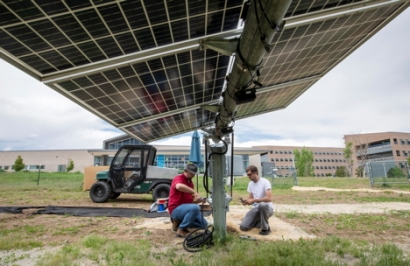
The Solar Supply Chain Traceability Protocol is a set of guidelines designed to help solar companies meet compliance obligations and, importantly, provide customers with assurances that their solar products are free of unethical labor practices.
“Solar customers expect their products to be ethically-produced, and this protocol helps ensure that solar products coming into the United States are not made using forced labor,” said John Smirnow, SEIA’s vice president of market strategy. “Solar is one of the cleanest and most reliable technologies on our grid today, and we hope this tool will give American buyers and leaders confidence at a time when solar energy increasingly supports our need to fuel economic growth and tackle the climate crisis.”
As manufacturers begin using the traceability protocol, it will be regularly reviewed and updated to improve its usability and effectiveness. It is important to point out that the protocol by itself will not stamp out forced labor, companies need to go through the steps laid out by the protocol.
In addition to the new traceability protocol, SEIA has finalized a comprehensive update to its Solar Commitment, which defines common labor, health and safety, environmental, and ethical standards and expectations for solar companies. The update modernizes the standard and now covers an expansive list of topics, including guidance on workplace safety and ethical labor practices.
The standard now features recycling and refurbishment best practices, information on energy consumption tracking, procedures companies can follow to avoid the use of conflict minerals in solar products, and additional guidance that companies can follow to hold their suppliers to all of these standards.
The Commitment is an important document that recognizes the need for companies to increasingly take responsibility for every aspect of the solar supply chain from upstream materials to recycling and disposition.
SEIA is also releasing a Solar Buyers’ Guide on Traceability, which summarizes the protocol and offers key questions that customers, developers, financiers, and other stakeholders should ask suppliers about products in the solar + storage value chain.
Several companies voiced support for SEIA’s supply chain efforts
"This important tool provides a consistent set of guidelines rooted in equity, security and sustainability to thousands of solar companies across the country," said George Hershman, President of Swinerton Renewable Energy (SRE) and SEIA Board Chair. “As we at SRE undergo an inventory of our own practices, we can do so with the confidence that we are united with our industry partners in a shared mission to uphold a secure and ethical solar supply chain."
“For the solar industry to live up to its promise of delivering a cleaner, better source of energy, its products must be produced ethically,” said Suzanne Leta, head of policy and strategy at SunPower. “We implore our peers to join us in standing up against forced labor, and to build their supply chains with accountability and traceability, down to the raw materials. With clear and helpful processes like the ones SEIA is laying out, this should be something every company in the solar industry can commit to.”
"We applaud SEIA's efforts to ensure the solar supply chain is ethically sourced by providing actionable steps companies can take to improve their visibility into their supply chain partners," said Scott Wiater, president and CEO, Standard Solar. "At Standard Solar, we work hard to live up to the highest ethical standards every day and strongly support our national association's efforts to spread those ethics industrywide."
“EDF Renewables North America supports this incredibly important work by SEIA to set guidelines to uphold our sustainable development practices, specifically a traceability protocol to ensure solar and storage components are produced ethically,” said Art Del Rio, VP, Solar & Storage Strategic Procurement at EDF Renewables. “We stand with the industry in taking the necessary steps to not allow any place for corruption or forced labor in the supply chain.”

